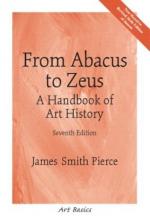|
This section contains 1,131 words (approx. 4 pages at 300 words per page) |

|
The abacus is the most ancient calculating device known. It has endured over time and is still in use in some countries. An abacus consists of a wooden frame, rods, and beads. Each rod represents a different place value—ones, tens, hundreds, thousands, and so on. Each bead represents a number, usually 1 or 5, and can be moved along the rods. Addition and subtraction can easily be performed by moving beads along the wires of the abacus.
The word abacus is Latin. It is taken from the Greek word abax, which means "flat surface." The predecessors to the abacus—counting boards— were just that: flat surfaces. Often they were simply boards or tables on which pebbles or stones could be moved to show addition or subtraction. The earliest counting tables or boards may simply have been lines drawn in the sand. These evolved into actual tables with grooves in...
|
This section contains 1,131 words (approx. 4 pages at 300 words per page) |

|


